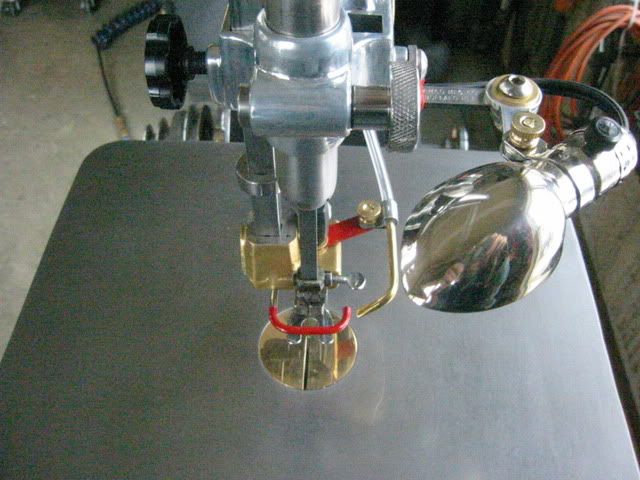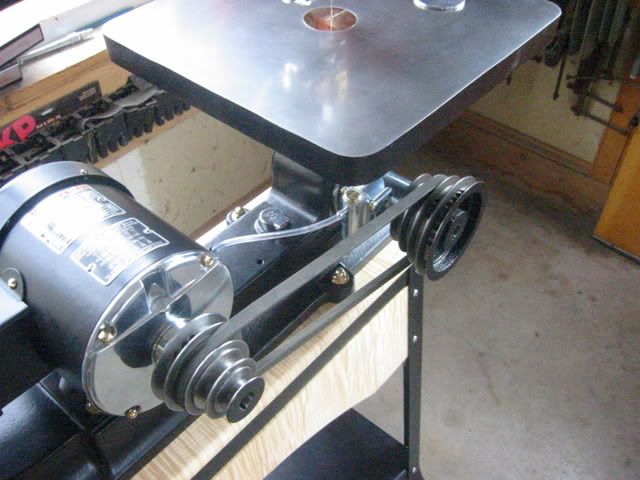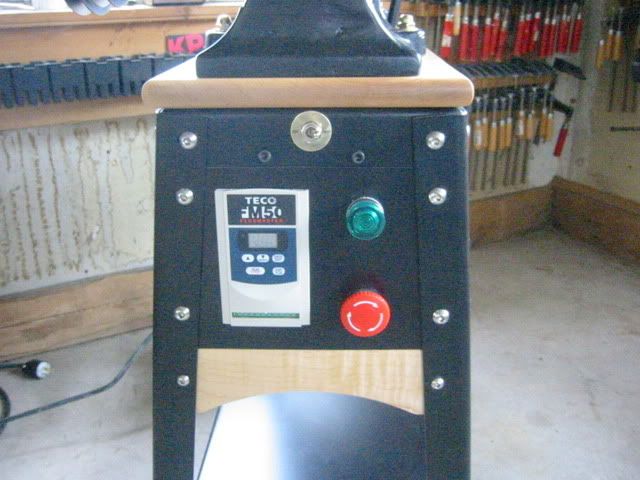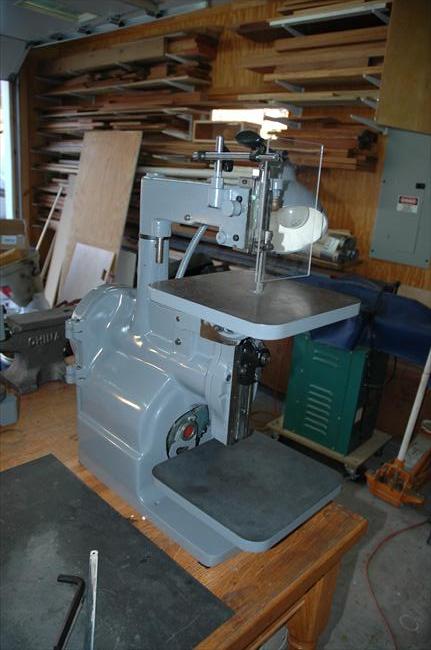I'm surprised, I was expecting to be convinced to buy a new saw!
There is an interesting saw made by Lee Marshall of Knew Concepts, who I think posts on this forum.
Knew Concepts Precision Power Saw - Fine Metalsmithing Saws Designed for Artisans - The Red Saw - Santa Cruz, CA
This is probably what I should have, but for now totally beyond my budget.
Greetings,
I'm Brian Meek, #1 Minion at Knew Concepts. Lee does watch PM, and will probably chime in here at some point, but he's been on vacation.
The KC power saw started out as a powered jeweler's saw, so it is capable of extremely delicate cutting. It'll take jeweler's blades down to 10/0. (.005" kerf), or larger skiptooth woodworking blades. (Fret saws and jewelers saws are the same thing by different names. The blade lengths are the same: 130mm. (5.125"))
It has a couple of advantages over the standard scroll saws as well.
(A) true vertical motion. No walking beam rig. Wouldn't work with teeny little blades like that.
(B) fails safe. The blade is held in tension, and moved by a cable rig. If the blade snaps, the cable goes slack, and the motion dies. No worries about it slamming a broken sawblade into your fingers.
(C) slotted carbide blade guides. The blades are backed up by grooved carbide posts that support them just above and below the cut Can't get much lateral support on those sorts of blades, but it does have back support right close.
(D) variable speed. It does use a universal motor, and with a standard foredom foot pedal, can be varied from 0 to 120 strokes/min. The foot pedal we stock for them (separately) is capable of very fine low-end control, so you can get the thing to just crawl along if you need to. (The foot pedals are separate because most folks who'd pop for a $2K saw already have a few spare foot pedals kicking around, and probably have distinct opinions on which style they prefer. The one we stock is made in the US, and has the best low end of any pedal available. ) (It's a Lucas 'Lo-Boy' pedal. No, not *that* Lucas. These guys are out of downstate NY, and have been around the jewelry biz for years and years.)
(E) It's optimized for cutting thin material. (Sub 1/8") and is set up to use the entire available stroke of the blade, rather than jackrabbiting along with just a 1" stroke like most scroll saws, which wears out the center of the blade without ever touching the ends. It does have extra holes in the crank arm to adjust the stroke for thicker material, but it ships set up for maximum stroke.
I realize they're expensive, so this isn't much more than a basic explanation about them. They're entirely made in the US. The parts machining is mostly me, and Lee does the final assembly. They're pretty much entirely custom parts. Other than the screws, the motor and a couple of plastic guide wheels for the cable, we make everything else.
If anybody has more questions, PM me and I'll answer directly.
Regards,
Brian






 )
)